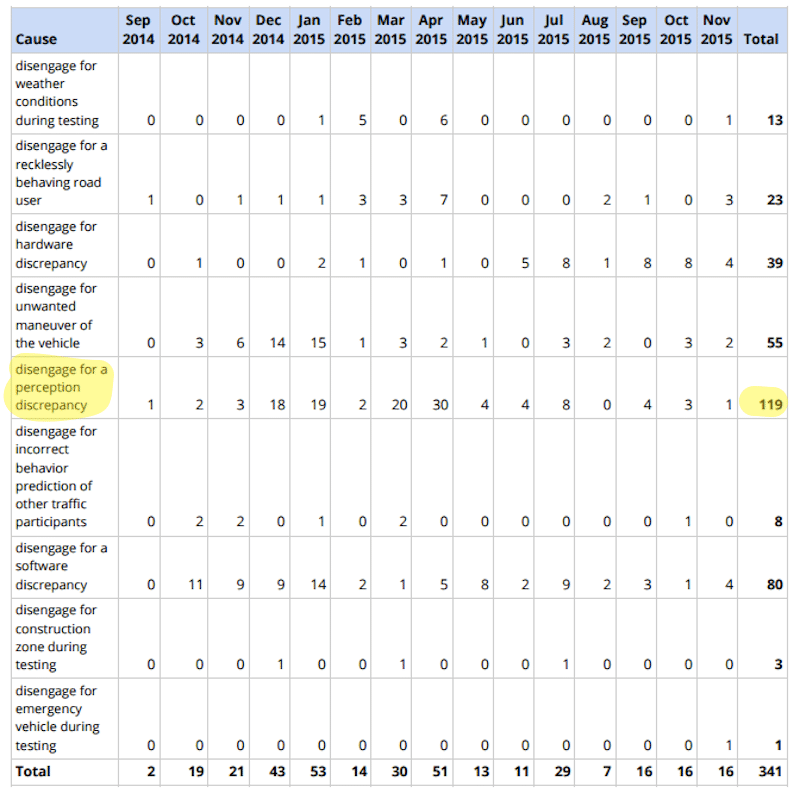Over the course of the 1.3 million miles that Google's self-driving vehicles have cruised around public roads since September 2014, the cars failed 272 times, according to a new report for the Department of Motor Vehicles that Google just published.
Each time, the cars "disengaged" from their autonomous mode, giving control to the the driver.
Of the failures, 13 would have resulted in crashes, according to Google's simulations.
There were 69 additional times when the drivers of the cars decided to take control of their own accord.
Why?
Google's report lists a handful of reasons. The most popular: Perception discrepancies. In 119 cases, one of Google's cars disengaged because its sensors did not correctly identify an object. The example Google lists is one of its cars mistaking an over-hanging branch for an obstacle.
The second most common cause of disengagement was software discrepancies. That's a catch-all category where Google lumps all situations where "apparent software inadequacies" don't fall into other categories (for example, this would include map or calibration problems).
Here's a chart showing all of the causes for disengagement and how often they led to a car ceding control to a real driver:

Late last year, the DMV drafted self-driving car rules that would force a licensed driver to be present in the front seat of an autonomous vehicle at all times. Google expressed its "grave disappointment" at this ruling, but the public interest group Consumer Watchdog took today's report as a sign that the move was prudent.
"The DMV got it exactly right and is putting our safety first," director John Simpson said in a statement on the report. "How can Google propose a car with no steering wheel, brakes or driver when its own tests show that over 15 months the robot technology failed and handed control to the driver 272 times and a test driver felt compelled to intervene 69 times?"
Google, on the other hand, is predictably optimistic.
"The number of autonomous miles we are driving between immediate manual control disengagements is increasing steadily over time," the company writes.
Earlier today, the CEO of the autonomous car project, John Krafcik, reiterated that Google is fully committed to total autonomy as a way to dramatically cut down on vehicle-related deaths.









